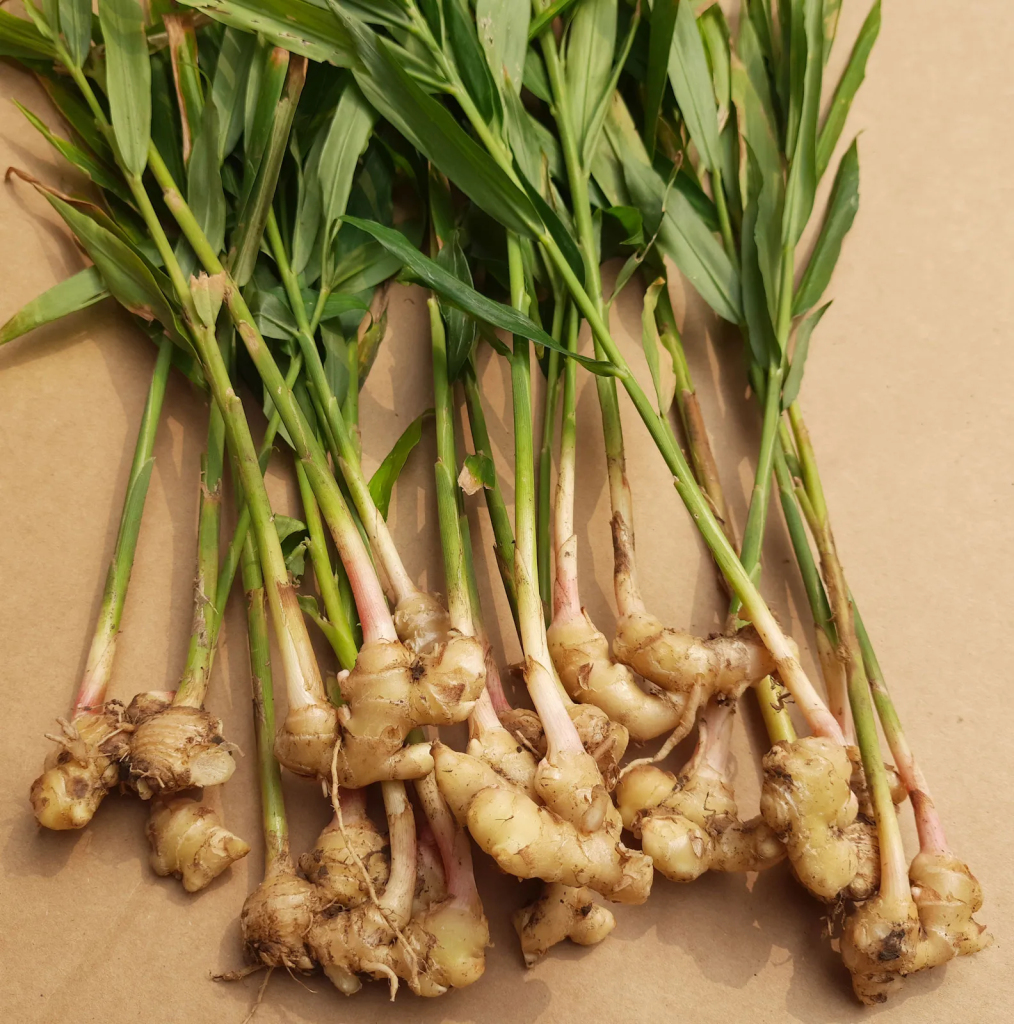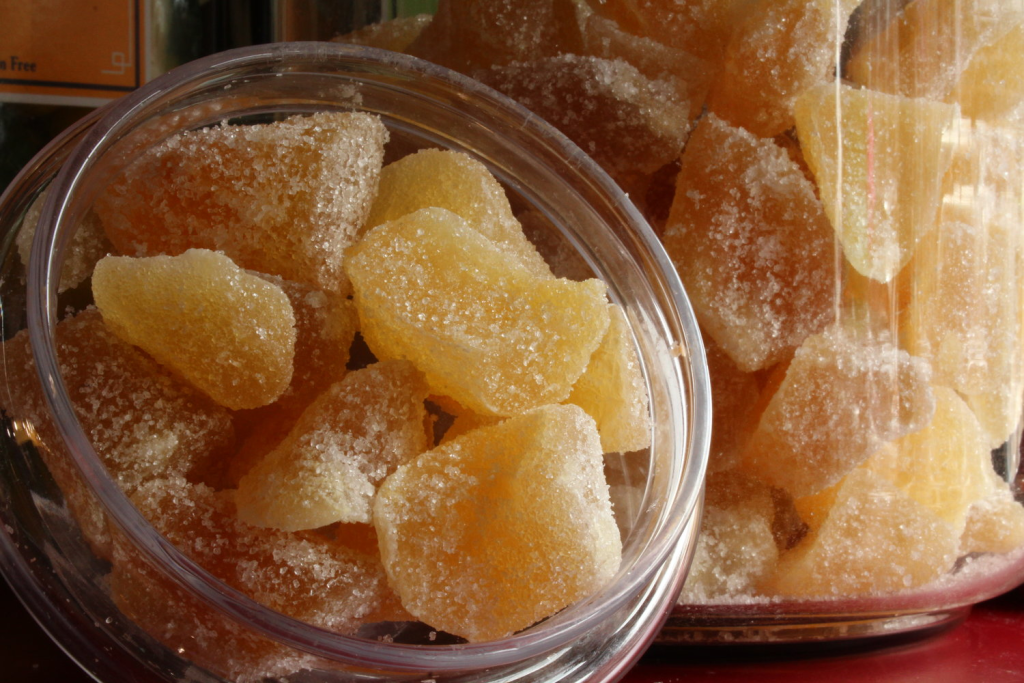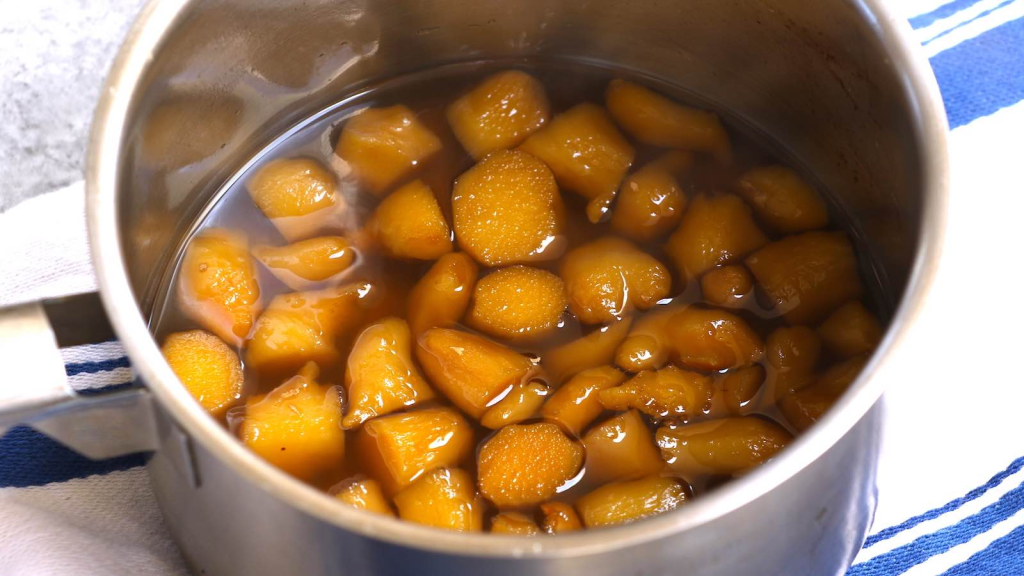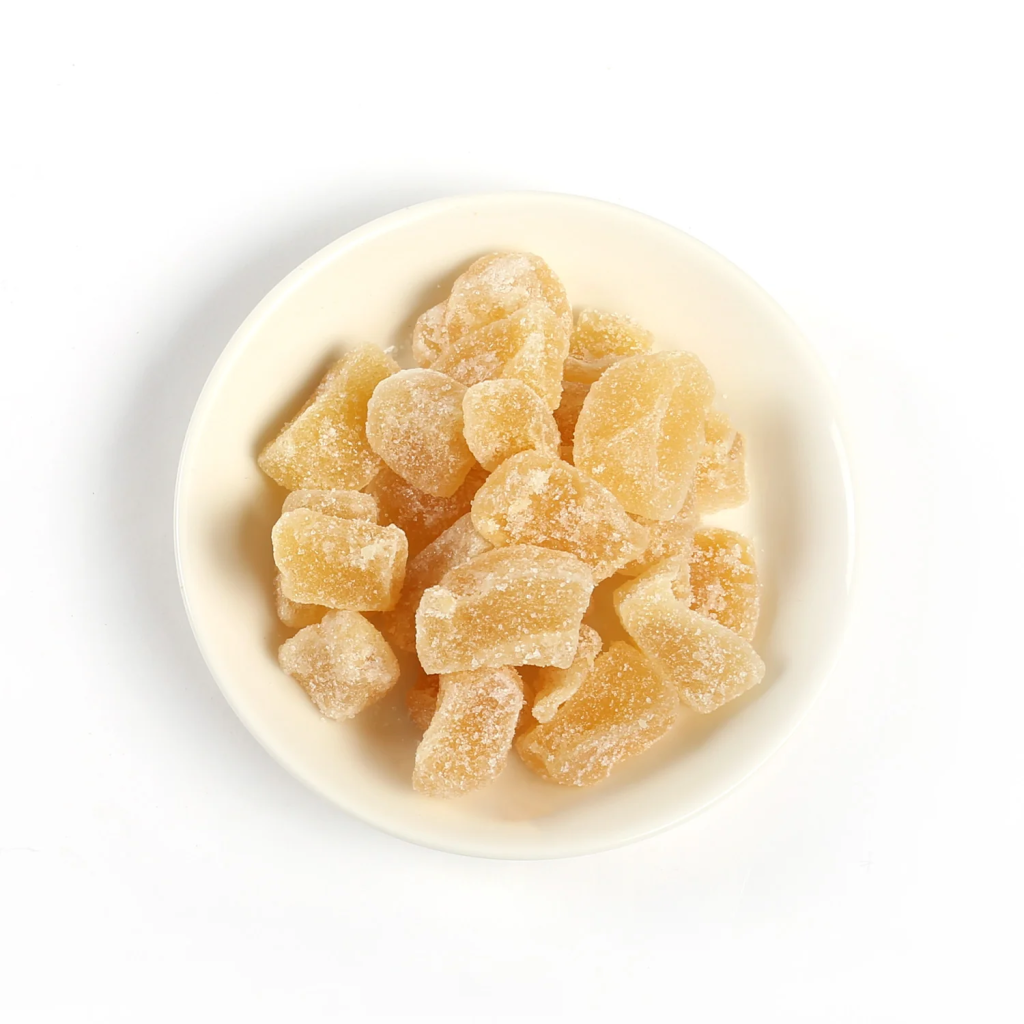Stem ginger, also known as preserved ginger, is a culinary delight cherished for its sweet and spicy flavor. Made from young ginger roots preserved in sugar syrup, stem ginger adds a unique zing to a variety of dishes. This article explores the irresistible charm of stem ginger, its culinary uses, and why it’s a must-have ingredient for your kitchen.
What is Stem Ginger?
Stem ginger refers to young, tender ginger roots that are peeled and preserved in a sweet syrup. This preservation method enhances the natural spiciness of ginger with a delicious sweetness, making it a versatile ingredient in both sweet and savory recipes.

Stem ginger, a culinary gem treasured for its zesty flavour and succulent texture, stands as a testament to the versatility and allure of ginger in its most indulgent form. This delightful ingredient, candied or crystallised ginger, is created by cooking young, fresh ginger root in a sugar syrup until it becomes tender and sweet yet retains its spicy kick. The result is a confection that balances ginger’s natural warmth and zest with a delectable sweetness, making it a favourite among cooks and bakers alike.
Stem ginger, also known as candied ginger or crystallised ginger, refers to the young roots of the ginger plant that have been peeled, sliced, or chopped and then preserved in sugar syrup.
Over time, the ginger softens and absorbs the sweetness of the syrup, resulting in a tender, chewy texture with a spicy-sweet flavour profile. Once the ginger pieces are sufficiently candied, they can be rolled in granulated sugar to create crystallised ginger, which has a slightly crunchy exterior or left as is for a softer finish.
This process not only extends the shelf life of ginger but also transforms it into a versatile confection that can be enjoyed on its own as a sweet treat, used as a baking ingredient to add depth and warmth to cakes, biscuits, and desserts, or incorporated into savoury dishes and sauces.
Stem ginger is celebrated for its ability to impart a vibrant, spicy kick to a wide range of culinary creations, making it a cherished ingredient in kitchens around the world. Its distinctive taste and texture offer an intriguing contrast in dishes, bridging the gap between the fiery essence of fresh ginger and the comforting sweetness of sugar.
What’s the Difference Between Stem Ginger and Root Ginger?
Root ginger is the fresh, raw rhizome of the ginger plant, used for its strong, spicy flavour in various dishes.

Stem ginger, in contrast, is root ginger that has been preserved in sugar syrup, offering a sweeter, milder taste and is often used in baking and confections.
The main difference between them lies in their preparation and culinary uses.
Culinary Uses of Stem Ginger
Stem ginger, with its unique combination of sweetness and zing, can be a delightful addition to many culinary creations.
Here’s how you can use stem ginger to enhance both sweet and savoury dishes:
1. Baking Delights
Stem ginger is a fantastic addition to various baked goods, adding a warm, spicy kick and a hint of sweetness.

- Gingerbread: Enhance the flavor of traditional gingerbread cookies or cakes by incorporating finely chopped stem ginger into the batter.
- Muffins and Scones: Add stem ginger pieces to muffin or scone dough for a delightful surprise in every bite.
- Puddings: Stir stem ginger into puddings or custards for an extra layer of flavor and texture.
2. Sweet Treats
The sweet and spicy notes of stem ginger make it perfect for creating indulgent desserts.

- Ice Cream: Fold chopped stem ginger into vanilla or chocolate ice cream for a gourmet twist.
- Candies: Coat stem ginger pieces in dark chocolate for an irresistible treat.
- Cakes and Tarts: Use stem ginger as a topping for cheesecakes, tarts, or flans to add a burst of flavor.
3. Savory Dishes
Stem ginger isn’t just for desserts; it can also elevate savory dishes with its unique flavor profile.
- Stir-Fries: Add thin slices of stem ginger to vegetable or meat stir-fries for a sweet and spicy note.
- Marinades and Sauces: Incorporate stem ginger into marinades for meats or create a ginger-infused sauce for poultry or seafood.
4. Beverages
Stem ginger can add a refreshing twist to various beverages.
- Cocktails: Muddle stem ginger in cocktails for a spicy-sweet kick.
- Tea: Add a spoonful of stem ginger syrup to hot tea for a comforting, flavorful drink.
- Smoothies: Blend stem ginger into fruit smoothies for an added depth of flavor.
5. As a Garnish:

- Decorative Topping: Use thin slices or small chunks of stem ginger to garnish desserts, such as cakes, cupcakes, or plated desserts, for an attractive finish and a burst of flavour.
- Cocktails and Beverages: Add a piece of stem ginger to cocktails for a sweet, spicy twist, or use the syrup to sweeten teas and hot drinks.
6. Other Uses
- Salads: Add chopped stem ginger to fruit salads or mixed green salads for an unexpected flavour contrast.
- Cheese Boards: Serve small pieces of stem ginger as part of a cheese board for a delightful combination of sweet, spicy, and savoury.
Note: When using stem ginger, remember that its flavour is concentrated, so start with a small amount and adjust according to taste.
The syrup it’s preserved in can also be utilised to sweeten and flavour dishes, offering another dimension of ginger’s warmth.
Whether incorporated into recipes or used as a garnish, stem ginger can bring a delightful twist to your culinary creations, showcasing its versatility across various dishes.
How Long Can You Keep Stem Ginger?
Stem ginger, when preserved in sugar syrup, has an impressive shelf life due to the preserving qualities of sugar, which acts as a natural preservative.
The best way to store stem ginger, which is ginger root preserved in sugar syrup, is to keep it in its original syrup in an airtight container.

This method helps maintain its moist texture and flavour.
It should be placed in the refrigerator for long-term storage, where it can last for several months.
Ensure the ginger is fully submerged in syrup to prevent it from drying or crystallising.
If the syrup level is low, add more or boiled and cooled sugar water to cover the ginger pieces.
Stem ginger can be stored properly for several months without losing quality.
Here are some guidelines for storing stem ginger to maximise its shelf life:
1. In the Refrigerator:
- Unopened: Commercially jarred stem ginger in syrup that hasn’t been opened can be stored in a cool, dry place, such as a pantry or cupboard, until the best-before date on the packaging. After opening, it should be kept in the refrigerator, lasting up to 12 months.
- Homemade or Opened Commercial Stem Ginger: Should be kept in an airtight container in the refrigerator. Ensure the ginger is fully submerged in syrup to prevent it from drying or becoming mouldy. Properly refrigerated, it can last for about 12 months.
2. In the Freezer:
- Stem ginger can also be frozen in the syrup or after draining (though freezing it in the syrup might help retain its texture and flavour better). When freezing, ensure it’s in an airtight container or a heavy-duty freezer bag. Frozen stem ginger can last for up to 18 months. Thaw it in the refrigerator before use.
3. Tips for Storage:
- Airtight Containers: Whether storing in the fridge or cupboard, ensure the container is airtight to prevent the introduction of moisture or contaminants.
- Check Regularly: Even with proper storage, it’s a good idea to check the stem ginger periodically for signs of spoilage, such as an off odour, discolouration, or mould growth, especially if it’s homemade or has been opened for a while.
- Syrup Level: If the syrup level has decreased and the ginger is not fully submerged, add a simple sugar syrup to the container to ensure it remains covered.
Following these storage tips, you can ensure that your stem ginger remains fresh and flavourful for as long as possible, ready to add its unique spicy-sweet taste to your culinary creations whenever needed.
Health Benefits of Stem Ginger
Aside from its delightful taste, stem ginger also offers numerous health benefits:
- Digestive Aid: Ginger is known for its ability to soothe the digestive system, reduce nausea, and improve digestion.
- Anti-Inflammatory Properties: The active compounds in ginger, such as gingerol, have powerful anti-inflammatory effects, helping to reduce inflammation and pain.
- Immune Boost: Ginger’s antioxidant and antimicrobial properties can help boost the immune system and protect against infections.
- Relieves Nausea: Stem ginger can be an effective remedy for nausea, including morning sickness during pregnancy and motion sickness.
How to Make Stem Ginger at Home
Making stem ginger at home is a simple process that requires only a few ingredients.
Ingredients:
- Fresh young ginger roots
- Sugar
- Water

Instructions:
- Peel and Slice: Peel the ginger roots and slice them into thin pieces.
- Blanch: Boil the ginger slices in water for about 10 minutes to soften them.
- Prepare Syrup: In a separate pot, combine equal parts sugar and water to create a syrup. Bring it to a boil, stirring until the sugar dissolves.
- Combine: Add the blanched ginger slices to the syrup and simmer for about 30 minutes until the ginger is translucent and tender.
- Store: Transfer the ginger and syrup to a sterilized jar and let it cool before sealing. Store in the refrigerator and use as needed.

Stem ginger is a remarkable ingredient that brings a vibrant burst of flavour to both sweet and savoury culinary creations. Its ability to bridge the gap between different taste sensations—combining the heat of ginger with the comforting sweetness of sugar syrup—makes it a beloved favourite among culinary professionals and home cooks alike.
Stem ginger is a versatile and irresistible ingredient that can elevate a wide range of dishes with its unique sweet and spicy flavor. Whether you’re baking, cooking savory meals, or creating refreshing beverages, stem ginger adds a delightful twist that is hard to resist. Incorporate stem ginger into your culinary repertoire to enjoy its rich taste and health benefits.


